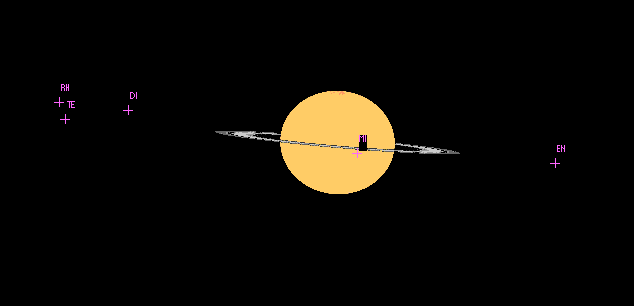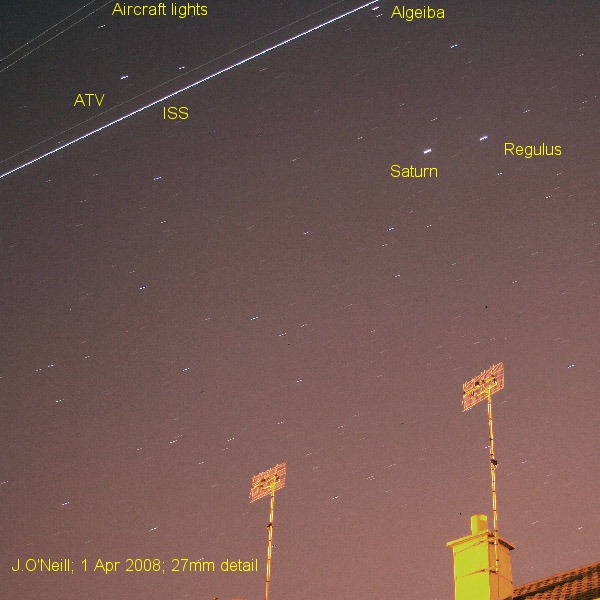|
|
|
|
|
|
|
|
|
|
(go direct to gallery list); Whats Up in the sky by member Jane Houston-Jones (JPL, California).

Observe them in the best detail you can and see if you can judge their relative ages of these three craters and give your reasons. We would like to hear from you.
Detail of mosaic by James Kelly. 16th December 2008. 20cm SCT (Celestron C8) with a DMK21AU04.AS mono camera.
These craters are well placed in early March and early April 2009.

During the final week of 2008 it was the best time to see Saturn's Rings at their narrowest. They closed to just an angle of -0.8°, the minus sign means the southern side is on view. In a very small telescope the rings may disappear completely, but in a larger telescope they should still be seen as a very narrow line on either side of the planet. It is also an excellent time to detect the fainter satellites as the glare from the rings is missing. Try imaging the planet or doing a scientific sketch carefully showing exactly what you see.
By early March 2009 the tilt of the rings increased to -2° and by early May 2009 they will be -4.1°. In the months thereafter the rings will then close once again. Their exact edge-on presentation, to the sun in August and to the earth in September 2009, but not be observable as Saturn will be too close the sun in the sky.
Saturn has now moved into the late evening sky, as it at opposition on 8th March 2009, so do have a look!.
The graphic shows Saturn at 23:00 UT on 5th March 2009. South is up. From Guide8.
 The first component (the Russian Zarya module) of the International Space Station (ISS) was launched in late 1998. Since then
numerous bits have been added. Most recently, in 2008, the European Columbus and Japanese Kibo modules have been added.
The has resulted in a steady brightening of the station to earth bound observers.
The first component (the Russian Zarya module) of the International Space Station (ISS) was launched in late 1998. Since then
numerous bits have been added. Most recently, in 2008, the European Columbus and Japanese Kibo modules have been added.
The has resulted in a steady brightening of the station to earth bound observers.Every few weeks the station has passes in the evening or morning skies. Accurate predictions are available at Heavens-Above. Select your location from the database and pick the ISS. Other satellites such as the ATV are available. There is no charge for using Heavens-Above.
The photo shows the ISS and the European ATV ("Jules Verne") cargo module flying in formation on 1st April 2008. By
J.O'Neill.